Class 7 Exam > Class 7 Notes > Chapter Notes For Class 7 > Chapter Notes: The Age of Reorganisation
The Age of Reorganisation Class 7 Notes Social Science Chapter 6 Free PDF
Introduction
The period after the Maurya Empire (around 185 BCE to 3rd century CE) is called the Age of Reorganisation because many new kingdoms formed as the Maurya Empire broke apart.
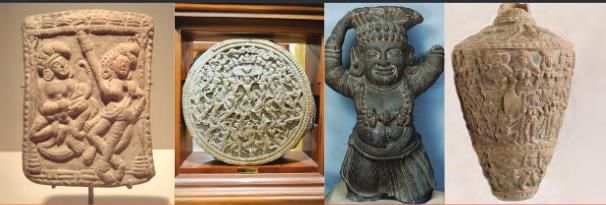 Glimpse of Art of Age of Reorganization
Glimpse of Art of Age of Reorganization
- These kingdoms competed to become powerful, reshaping India’s map and people’s lives.
- The northwest became weak, allowing foreign invaders like the Indo-Greeks, shakas, and Kushanas to enter.
- This era saw a mix of cultures, creating new styles in art, architecture, and literature.
- Rulers valued fairness, supported all schools of thought, and encouraged trade and culture.
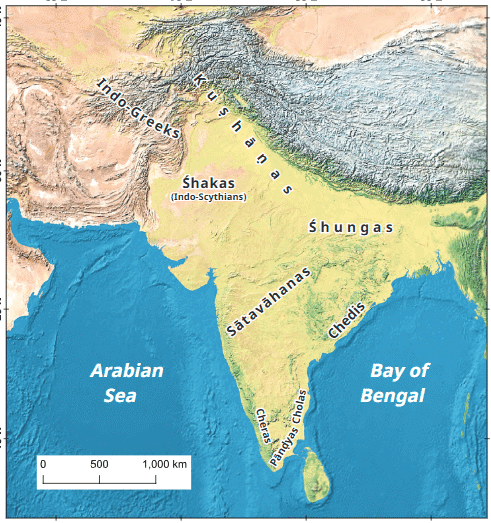 Prominent Dynasties of India during Reorganisation
Prominent Dynasties of India during Reorganisation
Surge of the Shungas
In 185 BCE, Pushyamitra Shunga, a Maurya commander, killed the last Maurya emperor and started the Shunga dynasty.
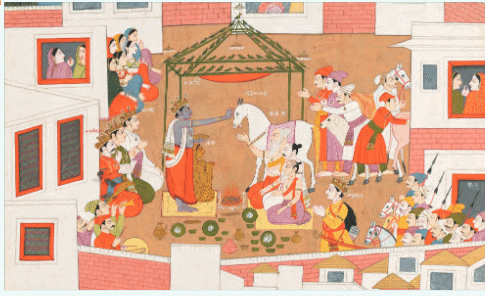 King Rama Performing Ashwamedha Yajna
King Rama Performing Ashwamedha Yajna
- The Shunga Empire ruled parts of north and central India but was smaller than the Maurya Empire.
- Pushyamitra performed the ashvamedha yajna, a Vedic ritual where a horse roamed freely, claiming unchallenged lands for the king or leading to battles if stopped.
- He protected the empire from invaders and built friendly ties with the Greeks after some battles.
- The Shunga Empire lasted about a century before declining.
- Vedic rituals became popular again, but Buddhist, Jain, and other beliefs continued to grow.
- Sanskrit became a key language for philosophy and literature, with works like Patanjali’s Yoga Sutras compiled during this time.
- The Shungas supported literature, art, and architecture.
Question for Chapter Notes: The Age of Reorganisation
Try yourself:
Who started the Shunga dynasty?View Solution
Some Shunga Contribution to Art
- The Shungas added beautiful carvings to the Bharhut Stupa in Madhya Pradesh, originally built during Ashoka’s time.
- The stupa’s railings and reliefs show stories from the Buddha’s life, among the earliest Buddhist art.
- Carvings include Lakshmi, singers, dancers, and elephants holding the wheel of dharma.
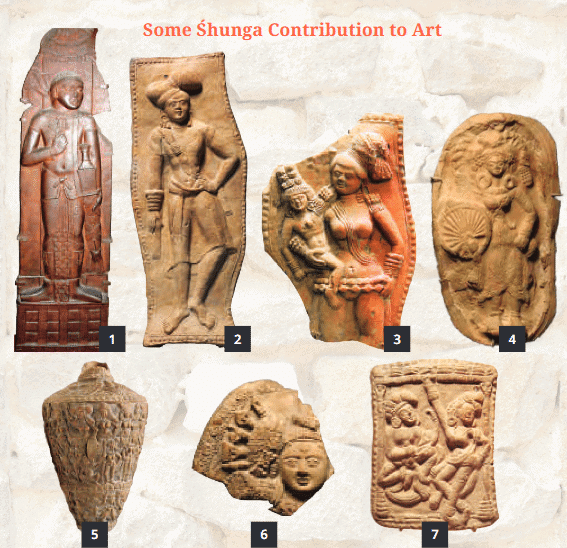 Shunga Contribution to Art
Shunga Contribution to Art
- Pillars with Greek warriors, showing cultural mixing.
- Terracotta figures of men, women, and royal families, with detailed hair ornaments.
- Bronze bangles with gold coating, ivory combs, and necklace beads.
- These artworks show daily life, clothing, jewellery, and the skill of Shunga craftsmen.
Question for Chapter Notes: The Age of ReorganisationTry yourself: What type of figures were included in Shunga art?View Solution
The Satavahanas
The Satavahanas (also called Andhras) ruled the Deccan (present-day Andhra Pradesh, Telangana, Maharashtra) from the 2nd century BCE.
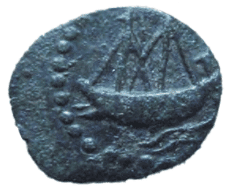 Satavahana Coin
Satavahana Coin
- Their capitals included Amravati and Pratishṭhana (Paithan).
- They likely fought the Shungas, their northern neighbors.
- Trade and agriculture thrived, supported by the fertile Krishna-Godavari river system.
- Satavahana coins, found from Gujarat to Andhra Pradesh, often showed ships, indicating strong maritime trade.
- They traded spices, textiles, sandalwood, gold-plated pearls, and ivory with the Roman Empire, importing glass and perfumed ointments.
- Tolls and taxes from trade added wealth to the kingdom.
- The Naneghat Caves near Pune, on a trade route, were used for collecting tolls and as rest stops for traders.
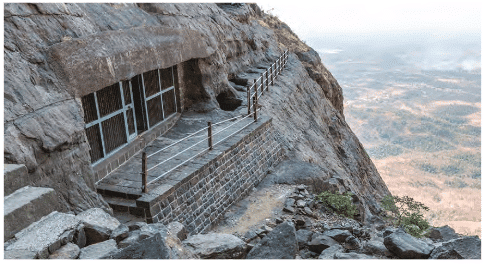 Naneghat Cave Near Pune
Naneghat Cave Near Pune
- Peace and wealth led to growth in literature, art, and culture.
- By the 3rd century CE, weak central control and economic decline broke the empire into smaller kingdoms.
Life under the Satavahanas
- Princes were named after their mothers, like Gautamiputra Satakarni, son of Gautami Balashri.
- Gautami Balashri, was a powerful queen who donated land to Buddhist monks and had an inscription carved in Nashik.
- A Satavahana widow queen performed the ashvamedha yajna and other Vedic rituals, as recorded in Naneghat inscriptions.
- She donated land, cows, horses, elephants, and silver coins to priests, scholars, and monks.
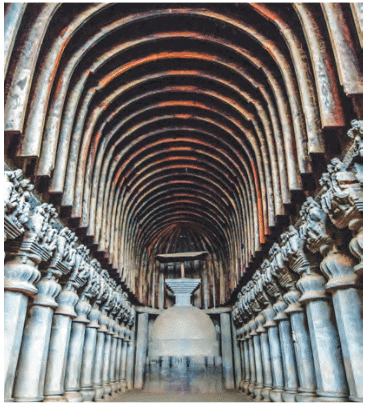 Karla Caves
Karla Caves
- Inscriptions in Brahmi script included early numerals, some resembling modern numbers, showing India’s role in numeral development.
- The Satavahanas followed Vasudeva (Krishna)but supported Vedic scholars, Jains, and Buddhists by giving them tax-free land.
- They built the Karla Caves in Maharashtra for Buddhist monks, with carved pillars and a stupa.
- A yaksha sculpture from the Pitalkhora Caves, made by a goldsmith named Kanahadasa, shows artisans worked in both metal and stone.
Question for Chapter Notes: The Age of ReorganisationTry yourself: What type of inscriptions were found in the Karla Caves?View Solution
Coming of the Chedis
After the Maurya Empire’s fall, Kalinga (modern Odisha) became powerful under the Chedi dynasty.
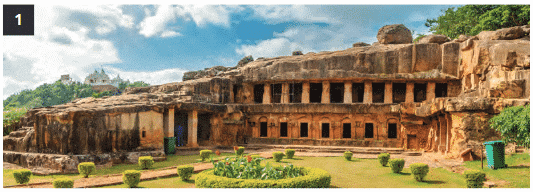 Udayagiri Caves near Bhubaneshwar
Udayagiri Caves near Bhubaneshwar
- King Kharavela, a key ruler, followed Jain teachings and was called a “monk-king” but respected all beliefs.
- The Udayagiri-Khandagiri Caves near Bhubaneswar, built for Jain monks, have detailed carvings and spacious rooms, showcasing rock-cut architecture.
- The Hathigumpha inscription in Brahmi script records Kharavela’s victories, welfare works, and creation of a council of sages from many regions.
- Kharavela supported all schools of thought, repaired temples, and showed the Indian ethos of fairness and inclusivity.
Kingdoms and Life in the South
From the 2nd or 3rd century BCE to the 3rd century CE, south India saw the rise of the Cheras, Cholas, and Pandyas.
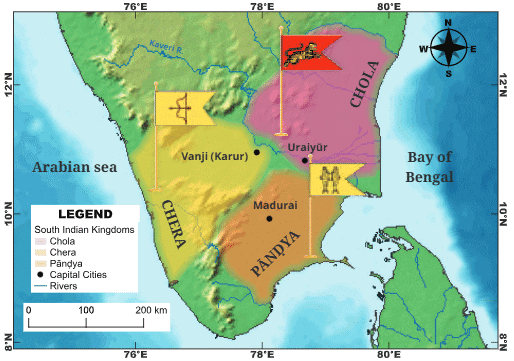 Chera, Chola, Pandya
Chera, Chola, Pandya
- These kingdoms competed for control but boosted trade and culture.
- They remained independent even during the Maurya Empire, as noted in Ashoka’s edicts.
- Kharavela claimed to defeat a south Indian alliance, but he did not invade the south.
- The period is called the Sangam Age, named after Sangam literature, poems by poets in assemblies (sangha).
- Sangam literature, the oldest in south India, includes poems about love, heroism, and generosity, giving insights into society and culture.
The Cholas
- The Cholas ruled parts of south India from the 3rd century BCE to the 13th century CE.
- King Karikala defeated the Cheras and Pandyas, becoming a powerful ruler.
- Karikala built the Kallanai (Grand Anicut), a water diversion system on the Kaveri River, to irrigate the delta, making it the “rice bowl of the South.”
- The Kallanai, still in use, supports farming in Tamil Nadu.
- The Chola capital, Puhar (Kaveripattinam), was a rich trading city.
Silappadikaram: The Tale of the Anklet
- Silappadikaram, an epic from the Sangam Age, tells the story of Kannagi and her husband Kovalan in the Chola city of Puhar.
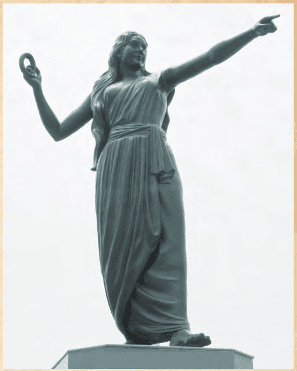 Statue of Kannagi, Chennai
Statue of Kannagi, Chennai
- Kovalan left Kannagi for a dancer, lost his wealth, and returned to her. She forgave him, and they moved to Madurai (Pandya capital).
- Kovalan was wrongly accused of theft while selling Kannagi’s anklet and executed by the Pandya king.
- Kannagi proved his innocence with her second anklet, and the king died of shock.
- Kannagi cursed Madurai, and the city was destroyed by fire. She then went to the Chera kingdom, where she was worshipped as a goddess.
- The story highlights justice and a ruler’s duty to protect it, showing life in the Chola, Pandya, and Chera kingdoms.
The Cheras
- The Cheras, also called Keralaputra, ruled western Tamil Nadu and Kerala, with their capital at Vanji (Karur).
 Coins under Chera Kings
Coins under Chera Kings
- They shaped the region’s culture and economy, supporting Sangam poets and Tamil literature.
- The Cheras traded spices, timber, ivory, and pearls with the Roman Empire and West Asia.
- Their coins featured a royal emblem, showing their identity.
The Pandyas
- The Pandyas ruled parts of Tamil Nadu, with their capital at Madurai, from several centuries BCE.
- They were a prosperous kingdom with strong administration, as noted by Megasthenes in his book Indika.
- The Pandyas traded pearls and other goods with the Greeks, Romans, and within India (Kharavela mentioned their pearls).
- They were a major naval power in the subcontinent.
- Pandya kings cared for their people’s welfare and supported all schools of thought, as recorded in inscriptions.
- Later Pandyas contributed to art, architecture, and prosperity.
Invasions of the Indo-Greeks
After Alexander’s campaign, his satraps in northwest India became independent, forming the Indo-Greeks.
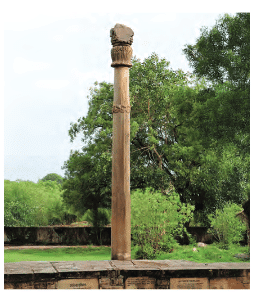 Heliodorus Pillar Near Vidisha
Heliodorus Pillar Near Vidisha
- After the Maurya Empire’s fall, the Indo-Greeks took control of northwestern, northern, and central India.
- They adopted Indian culture, blending Greek and Indian styles in governance, art, and daily life.
- The Heliodorus pillar near Vidisha, built by an Indo-Greek ambassador, praises Vasudeva as the “god of gods” and lists virtues like self-restraint, charity, and consciousness.
- Indo-Greek coins of gold, silver, copper, and nickel showed kings, Greek deities, or Indian deities like Vasudeva-Kṛishna and Lakshmi.
- Their rule ended with invasions by the Shakas (Indo-Scythians).
The Emergence of the Kushanas
The Kushanas, from Central Asia, entered India in the 2nd century CE. Their empire stretched from central Asia to northern India, influencing the subcontinent’s history.
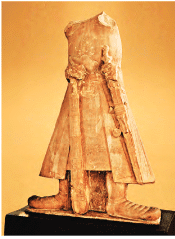 Headless Statue of King Kanishka
Headless Statue of King Kanishka
- King Kanishka promoted art and culture when not fighting wars.
- Kushana coins showed Kanishka as “King of Kings,” with Buddha or Shiva and Nandi, reflecting support for multiple beliefs.
- They controlled parts of the Silk Route, boosting trade with Asia and the West.
- Kushana art, like the Gandhara and Mathura schools, mixed Indian and Greek styles.
- Gandhara art (Punjab) used grey-black schist stone, showing detailed Buddha images with realistic anatomy and flowing robes.
- Mathura art (Uttar Pradesh) used red sandstone, depicting Indian deities like Kubera, Lakshmi, and Shiva with fuller figures.
- These art styles showed deities like Surya, laying the foundation for later temple architecture.
Points to Remember
- After the Maurya Empire fell, many new kingdoms formed, leading to the Age of Reorganisation.
- Foreign invasions and internal conflicts reorganized political powers.
- Cultures mixed, creating new art, architecture, and coinage styles, with Indian themes dominating.
- Sanskrit literature, like the Mahabharata and Ramayana, flourished.
- Trade grew, both within India and with other regions, boosting prosperity.
Difficult Words
- Age of Reorganisation: The period after the Maurya Empire when new kingdoms formed and competed.
- Ashvamedha yajna: A Vedic ritual where a horse roamed to claim land for the king.
- Brahmi script: An ancient Indian writing system used for inscriptions.
- Sangam literature: South Indian poems from the Sangam Age about love and societal values.
- Rock-cut architecture: Buildings carved directly into rock, like caves.
- Indo-Greeks: Greek rulers in northwest India who adopted Indian culture.
- Shakas: Indo-Scythians who invaded and ruled northwest India.
- Kushanas: Central Asian rulers who formed an empire in northern India.
- Silk Route: A trade route connecting Asia and the West.
- Gandhara art: Art style blending Greek and Indian elements, using schist stone.
- Mathura art: Indian art style using red sandstone for deities.
The document The Age of Reorganisation Class 7 Notes Social Science Chapter 6 Free PDF is a part of the Class 7 Course Chapter Notes For Class 7.
All you need of Class 7 at this link: Class 7
FAQs on The Age of Reorganisation Class 7 Notes Social Science Chapter 6 Free PDF
| 1. What were the key contributions of the Śhungas to ancient Indian art and culture? |  |
Ans. The Śhungas contributed significantly to ancient Indian art and culture, particularly through their patronage of the arts. They are known for the development of intricate sculptures, especially in the form of stone carvings and stupas, such as the famous Sanchi Stupa. Their artistic contributions also included the use of narrative reliefs that depicted scenes from the life of Buddha, and they played a pivotal role in the spread of Buddhist art and architecture in India.
| 2. How did life change under the Sātavāhanas in ancient India? |  |
Ans. Under the Sātavāhanas, life in ancient India saw considerable changes in various aspects such as trade, agriculture, and administration. The Sātavāhanas encouraged trade with foreign countries, which enhanced economic prosperity. They also made significant advances in agriculture by improving irrigation techniques. Moreover, they established a centralized administration that promoted stability and growth, resulting in cultural and artistic flourishing during their reign.
| 3. What was the significance of the Silappadikāram in the context of South Indian literature? |  |
Ans. The Silappadikāram, written by Ilango Adigal, is a seminal work in South Indian literature, portraying the cultural and social life of the Tamil people. It is significant for its narrative style and the blending of poetry with storytelling. The tale revolves around the themes of love, duty, and justice, and it explores the complexities of human relationships, making it a cornerstone of Tamil literary heritage and a reflection of the socio-political dynamics of the time.
| 4. What were the major achievements of the Chola dynasty during their rule? |  |
Ans. The Chola dynasty is renowned for its contributions to art, architecture, and administration. They built magnificent temples, such as the Brihadeeswarar Temple, showcasing remarkable Dravidian architecture. The Cholas also excelled in maritime trade, establishing a powerful navy and expanding their influence across Southeast Asia. Their administrative reforms and cultural patronage led to a vibrant period of economic prosperity and artistic innovation.
| 5. How did the Chedis emerge as a significant power in ancient India? |  |
Ans. The Chedis emerged as a significant power in ancient India through strategic alliances and military conquests. They established their rule in regions like present-day Madhya Pradesh and Uttar Pradesh and were known for their contributions to agriculture and trade. The Chedis played a crucial role in the regional politics of their time, often engaging in conflicts with neighboring kingdoms, which helped to define the political landscape of ancient India.
Related Searches
















